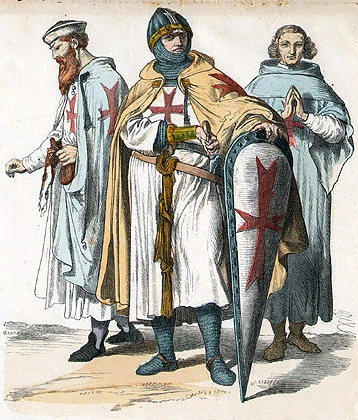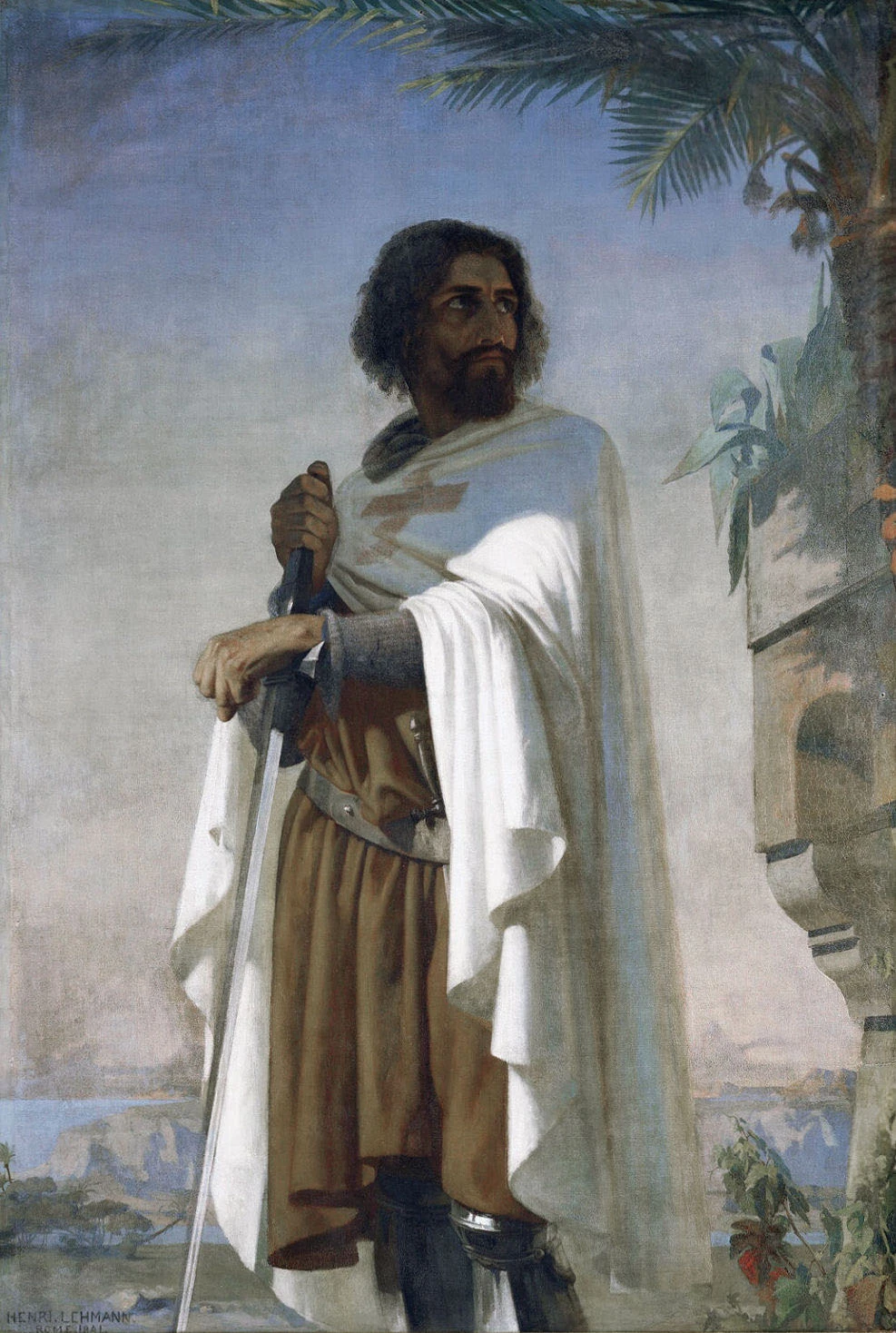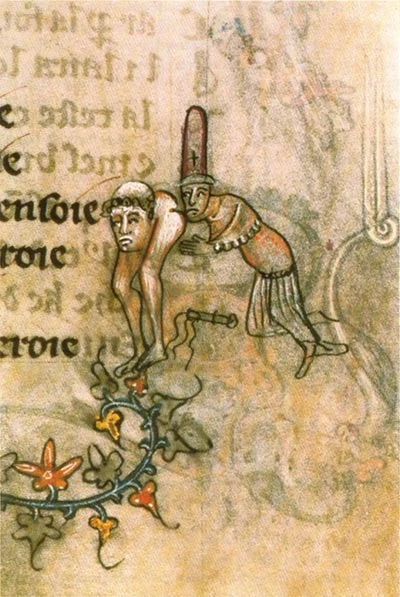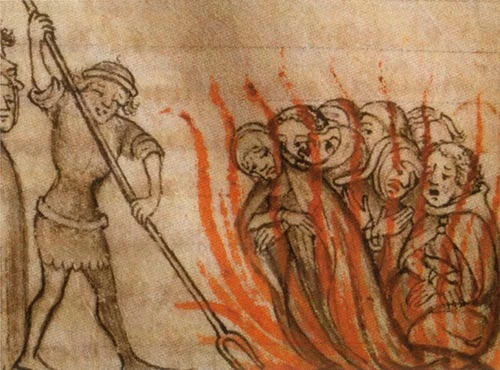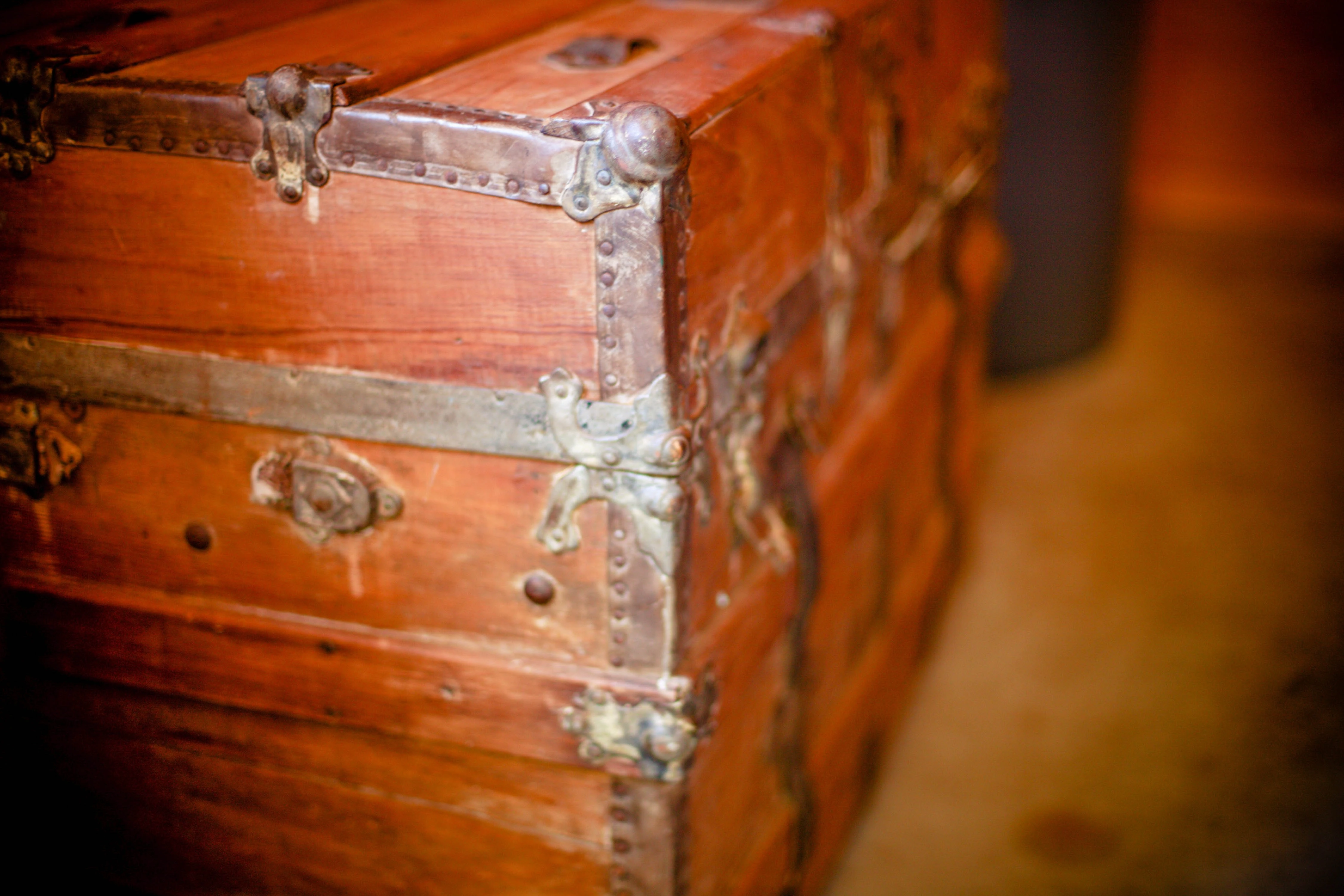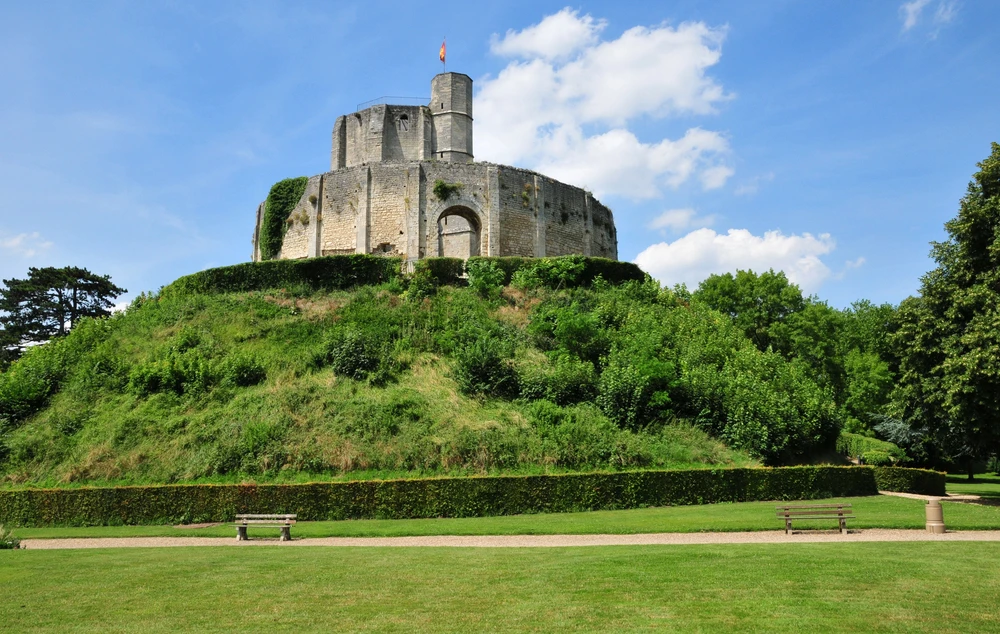The arrest and fall of the Knights Templar
Who were the Knights Templar?
Imagined Templars in the 19th century/ Illustration chosen by Monsieur de France: via wikicommons
Founded in 1129 at the Council of Troyes, the Order of the Temple was a brotherhood of soldier-monks created to protect pilgrims on their way to the Holy Places. The Knights Templar quickly established themselves throughout Europe, becoming a military, financial and political power. They built commanderies, collected donations, managed land, financed the Crusades, and even created a proto-banking system. Their growing influence and wealth worried the powerful, notably Philippe IV le Bel, King of France, who was heavily indebted to the order.
Hugues de Payens, First Grand Master of the Order of the Temple By Author Unknown - Archiv: The Pierpont Morgan Library/Art Resource, NY., Public domain, https://commons.wikimedia.org/w/index.php?curid=61696
The coup de filet of October 13, 1307
Templier embracing an ecclesiastic, manuscript by Jacques de Longuyon, circa 1350. By Author Unknown - Archiv: The Pierpont Morgan Library/Art Resource, NY., Public domain, https://commons.wikimedia.org/w/index.php?curid=61696
On Friday, October 13, 1307, all Templars in France are arrested by order of the king, with the help of Guillaume de Nogaret. In Paris, Jacques de Molay, grand master of the order, is captured along with 139 of his companions. The charges? Heresy, idolatry (worship of Baphomet), denial of Christ, unnatural practices, and usury. These accusations, without any real proof, allowed the king to discredit the order and seize its assets.
Trials and executions
Confessions are often extracted under torture. In 1312, Pope Clement V officially dissolves the order via the bull Vox in excelso. In March 1314, Jacques de Molay, Geoffroy de Charnay and Hugues de Pairaud are condemned to the stake on the Île aux Juifs in Paris. Legend has it that Molay cursed his judges and predicted their downfall. Philippe le Bel died in November 1314.
Templars burned alive (illumination from 1384) By Anonymous - Municipal Library, Besançon, France. Erich Lessing/Art Resource, NY.http://de.wikipedia.org/wiki/Bild:Templars_on_Stake.jpgde:Benutzer:LysisEingescannt from: Louis Crompton, Homosexuality & Civilization. Cambridge, Mass.; London 2003. p. 196., Public domain, https://commons.wikimedia.org/w/index.php?curid=454292
Where does the Templar treasure hide?
After the order's demise, a legend was born: the Knights Templar were said to have hidden a fabulous treasure, consisting of gold, relics and secret documents. No concrete proof has been found, but several locations still fuel the fantasies.
Gisors: the secret cache under the castle?
Located in the Eure department, the château de Gisors is often mentioned. It once belonged to the Knights Templar, and it was here that Jacques de Molay was incarcerated before his transfer to Paris. In 1946, a guard, Roger Lhomoy, claimed to have discovered an underground passage containing 30 chests in a vaulted room. Official excavations found nothing, but the rumor persists.
Le château de Gisors in Normandy / Photo chosen by Monsieurdefrance.com: depositphotos
Rennes-le-Château: mysteries surrounding Abbé Saunière
In Aude, the parish priest Bérenger Saunière restored the church of Sainte-Marie-Madeleine in 1886 and, it is said, discovered ancient parchments. He is said to have suddenly enriched himself, reviving hypotheses of a hidden treasure, perhaps that of the Temple. Although there's no proof of this, Rennes-le-Château still attracts researchers, journalists and the curious.
Other places mentioned
par Ivana Tomášková de Pixabay
Other tracks include :
-
Domme (Dordogne), where many Templars were imprisoned and where mysterious graffiti can still be found.
-
The Vaour commandery (Tarn), abandoned after 1307.
-
Le Val de Joux (Switzerland), where Knights Templar are said to have taken refuge with possessions.
Despite excavations, books, theses and even novels like those by Dan Brown, the Templar treasure has never been found. This fuels all the more the myth of a Templar treasure still hidden, waiting to be discovered beneath a castle, a crypt or in the basements of an old abbey.
FAQ
Why were the Knights Templar arrested in 1307?
For heresy and embezzlement, according to the royal indictment; the political context was decisive.
Did the Templar treasure ever exist?
There is no material evidence; several hypotheses have persisted for centuries.
What can we see today that is linked to the Knights Templar?
Commanderies, castles, and museums throughout France preserve traces and archives.

